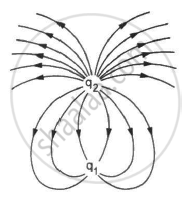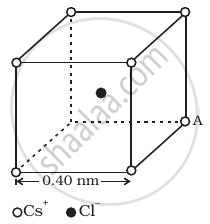Advertisements
Advertisements
Question
When a charged comb is brought near a small piece of paper, it attracts the piece. Does the paper become charged when the comb is brought near it?
Solution 1
When a charged comb is brought near a small piece of paper, it attracts the piece due to induction. There's a distribution of charges on the paper. When a charged comb is brought near the pieces of paper then an opposite charge is induced on the near end of the pieces of paper so the charged comb attracts the opposite charge on the near end of paper and similar on the farther end. The net charge on the paper remains zero.
Solution 2
When a charged comb is brought near a small piece of paper, it attracts the piece due to induction. There's a distribution of charges on the paper. When a charged comb is brought near the pieces of paper then an opposite charge is induced on the near end of the pieces of paper so the charged comb attracts the opposite charge on the near end of paper and similar on the farther end. The net charge on the paper remains zero.
APPEARS IN
RELATED QUESTIONS
It is now believed that protons and neutrons (which constitute nuclei of ordinary matter) are themselves built out of more elementary units called quarks. A proton and a neutron consist of three quarks each. Two types of quarks, the so called ‘up’ quark (denoted by u) of charge (+2/3) e, and the ‘down’ quark (denoted by d) of charge (−1/3) e, together with electrons build up ordinary matter. (Quarks of other types have also been found which give rise to different unusual varieties of matter.) Suggest a possible quark composition of a proton and neutron.
Does the charge given to a metallic sphere depend on whether it is hollow or solid? Give reason for your answer.
Consider the situation shown in the figure. What are the signs of q1 and q2? If the lines are drawn in proportion to the charges, what is the ratio q1/q2?

Choose the correct option.
Two charges of 1.0 C each are placed one meter apart in free space. The force between them will be
A metallic sphere A isolated from ground is charged to +50 μC. This sphere is brought in contact with other isolated metallics sphere B of half the radius of sphere A. The charge on the two-sphere will be now in the ratio
Answer the following question.
State the law of conservation of charge.
+2 C and +6 C two charges are repelling each other with a force of 12 N. If each charge is given -2 C of charge, then the value of the force will be ______
Let x = πR`(("P"^2 - "Q"^2)/2)`, where P, Q and Rare lengths. The physical quantity x is ______.
Conservation of charges in tribo electric charging _________.
The number of lines of force that radiate outwards from one coulomb of charge is:-
The dimensions of an atom are of the order of an Angstrom. Thus there must be large electric fields between the protons and electrons. Why, then is the electrostatic field inside a conductor zero?
A paisa coin is made up of Al-Mg alloy and weighs 0.75g. It has a square shape and its diagonal measures 17 mm. It is electrically neutral and contains equal amounts of positive and negative charges.
Treating the paisa coins made up of only Al, find the magnitude of equal number of positive and negative charges. What conclusion do you draw from this magnitude?
Consider a coin of Example 1.20. It is electrically neutral and contains equal amounts of positive and negative charge of magnitude 34.8 kC. Suppose that these equal charges were concentrated in two point charges seperated by (i) 1 cm `(∼ 1/2 xx "diagonal of the one paisa coin")`, (ii) 100 m (~ length of a long 6 building) and (iii) 106 m (radius of the earth). Find the force on each such point charge in each of the three cases. What do you conclude from these results?
Figure represents a crystal unit of cesium chloride, CsCl. The cesium atoms, represented by open circles are situated at the corners of a cube of side 0.40 nm, whereas a Cl atom is situated at the centre of the cube.

The Cs atoms are deficient in one electron while the Cl atom carries an excess electron.
- What is the net electric field on the Cl atom due to eight Cs atoms?
- Suppose that the Cs atom at the corner A is missing. What is the net force now on the Cl atom due to seven remaining Cs atoms?
A steady current of 8 mA flows through a wire. The number of electrons passing through a cross-section of the wire in 10 s is ______.
